Chapter 4: Functional Anatomy of Prokaryotic and Eukaryotic Cells
1/111
Earn XP
Description and Tags
Name | Mastery | Learn | Test | Matching | Spaced |
|---|
No study sessions yet.
112 Terms
prokaryote
one circular chromosome, not in a membrane, no histones, no organelles, divides by binary fission, examples include bacteria & archaea
eukaryote
paired chromosomes in nuclear membrane, histones, organelles, polysaccharide cell walls when present, divides by mitosis/meiosis
most bacteria are
monomorphic (single shape)
pleomorphic
many shapes
bacillus
rod shaped bacteria
coccus
spherical shaped bacteria
bacterial shapes
bacillus, coccus, spiral, star, rectangular, and can be long filaments
pairs
diplococci, diplobacilli
clusters
staphylococci
chains/chainlike patterns
streptococci, streptobacilli
divide in planes of 2 and remain in groups of 4
tetrad
divide in planes of 3 and remain in cubelike groups of eight
sarcinae
arrangements of bacteria
single (one), diplo (pair), tetrad (four, square), sarcina (eight, cube), staphylo arrangement (cluster), and strepto- arrangement (sheets, chains)
the plasma membrane
a phospholipid bilayer that encloses the cytoplasm, peripheral proteins, integral and transmembrane proteins; this regulates what can enter and exit the cell
size range for the diameter of most bacteria
0.2µm to 2.0µm
peripheral proteins
proteins on the membrane surface
integral proteins
proteins that are permanently attached to a biological membrane; play critical roles in movement of molecules across them and the transduction of energy and signals
transmembrane proteins
often function as channels or receptors, allowing specific substances to pass across the membrane
integral and transmembrane proteins
penetrate the membrane
fluid mosaic model
a way of describing the dynamic arrangement of proteins and phospholipids in a cell membrane, where components can move laterally within the layer
components of the fluid mosaic model
membrane is as viscous as olive oil, proteins move freely for various functions, phospholipids rotate and move laterally, self-sealing
phospholipids
consists of a hydrophilic head and two hydrophobic tails (one saturated and unsaturated), forming a bilayer in cell membranes
selective permeability
a characteristic of the plasma membrane; it allows the passage of certain molecules while restricting others
functions of the plasma membrane
selective permeability, contain enzymes for ATP production (ATPase), some membranes have chromatophores
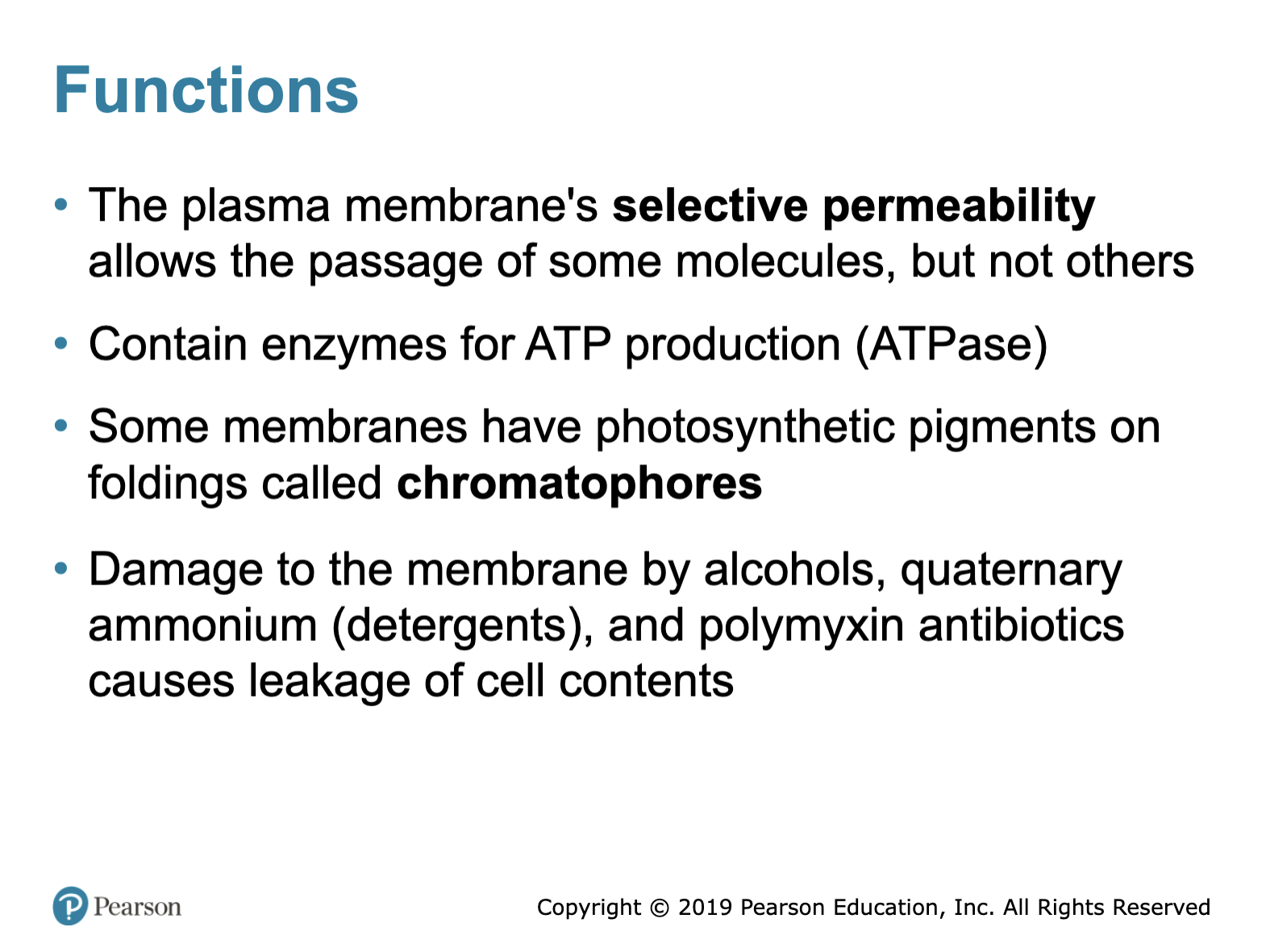
causes of leakage of cell contents
damage to the membrane by alcohols, quaternary ammonium (detergents), and polymyxin antibiotics
chromatophores
present in some membranes; photosynthetic pigments on foldings
movement processes across the cell membrane
active and passive
passive process
substances move from high to low concentration; no energy expended
active processes
substances move from low to high concentration; energy expended
examples of passive processes
simple diffusion, facilitated diffusion, osmosis, osmotic pressure, isotonic solution, hypotonic solution, hypertonic solution
simple diffusion
movement of a solute from an area of high concentration to low concentration; continues until molecules reach equilibrium
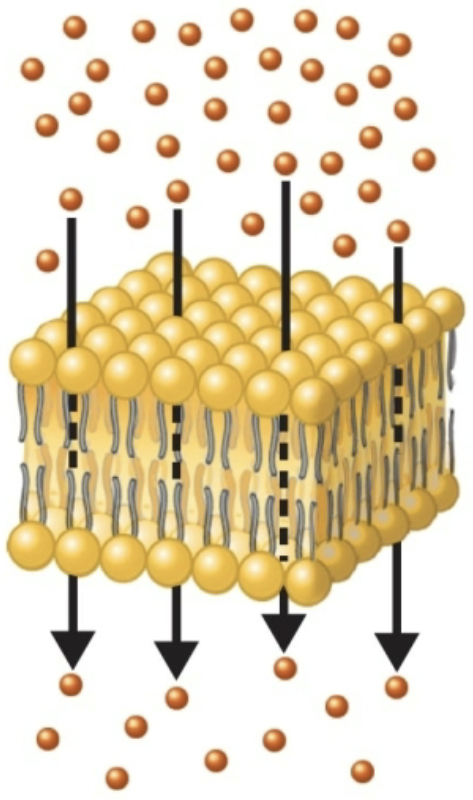
facilitated diffusion
solute combines with a transporter protein in the membrane; transports ions and larger molecules across a membranes with the concentration gradient

osmosis
the movement of water across a selectively permeable membrane from an area of high water to an area of lower water concentration; happens through lipid layer & uses aquaporins (water channels) in the process
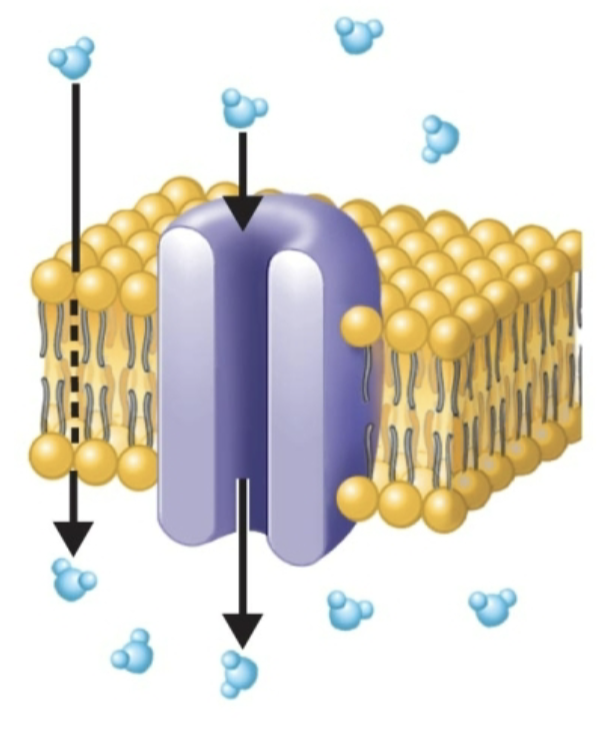
osmotic pressure
the pressure needed to stop the movement of water across the membrane
isotonic solution
solute concentrations equal inside and outside of cell; water at equilibrium
hypotonic solution
solute concentration is lower outside than inside the cell; water moves into the cell and will eventually cause it to burst
hypertonic solution
solute concentration is higher outside of cell than inside; water moves out of the cell eventually causing it to shrink
examples of active processes
active transport & group translocation
active transport
requires a transporter protein and ATP; goes against the gradient
group translocation
requires a transporter protein and phosphoenolpyruvic acid (PEP); substance is altered as it crosses the membrane
the cell wall
prevents osmotic lysis and protects the cell membrane, made of peptidoglycan (in bacteria), can contribute to pathogenicity
osmotic lysis
the bursting or rupturing of cell membrane due to osmotic movement of water into the cell when the cell is in a hypotonic environment
peptidoglycan
polymer of a repeating disaccharide in rows: N-acetylglucosamine (NAG) and N-acetylmuramic acid (NAM); rows are linked by polypeptides (usually 4 × 6)
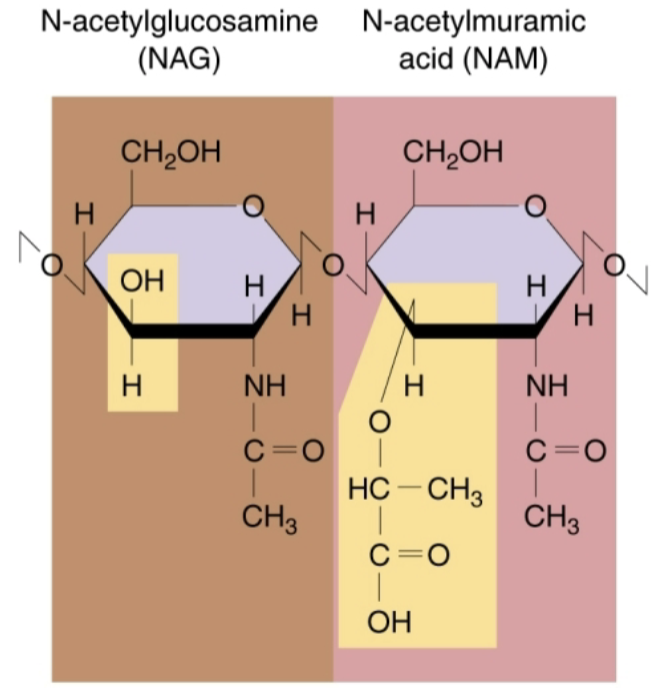
gram-postive cell walls
contains a thick, multilayered peptidoglycan layer, teichoic acids, and lacks an outermembrane
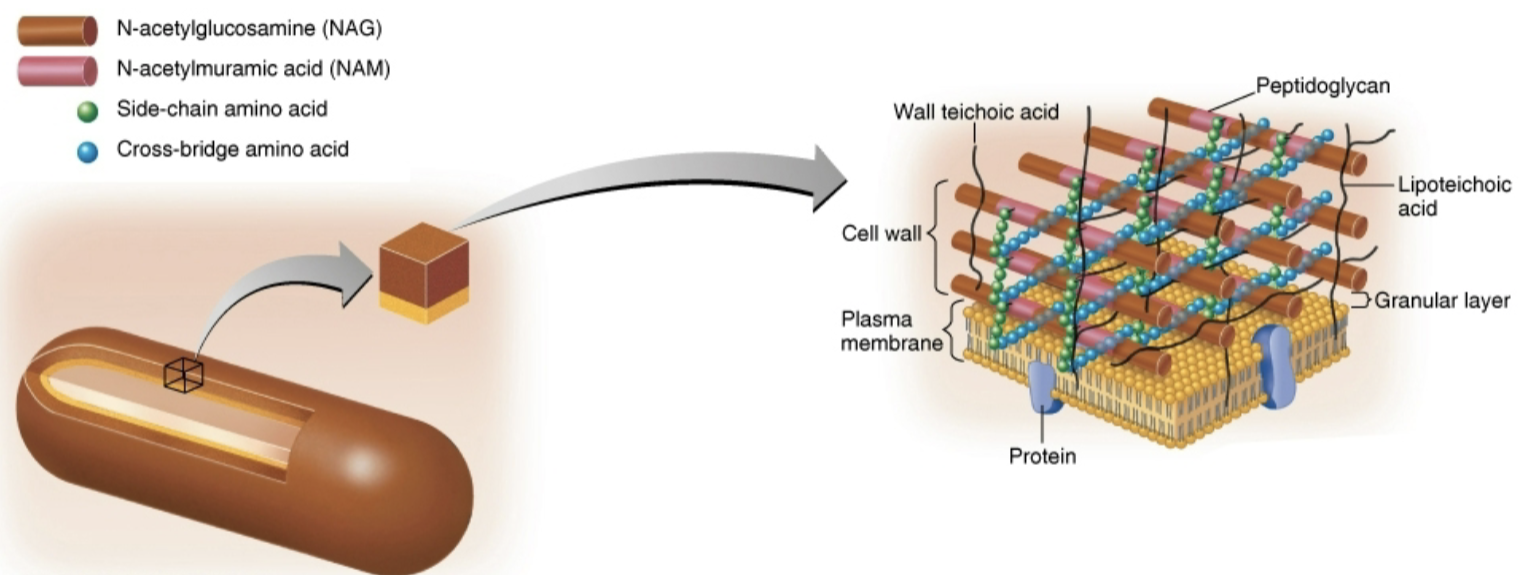
teichoic acids
a polysaccharide found in gram-positive cell walls; consists of lipoteichoic acid and wall teichooc acid; carries a negative charge and regulates the movement of cations
lipoteichoic acid
links cell wall to plasma membrane; found in gram-postive cell walls
wall teichoic acid
covalently bound to/links the peptidoglycan; found in gram-postive cell walls
provides antigenic specificity
polysaccharides and terichoic acids
gram-negative cell walls
has periplasm between the outer membrane and the plasma membrane contains peptidoglycan; outer membrane made of polysaccharides, lipoproteins, and phospholipids; protects from phagocytes and antibiotics; made of lipopolysaccharide (LPS); contains porins
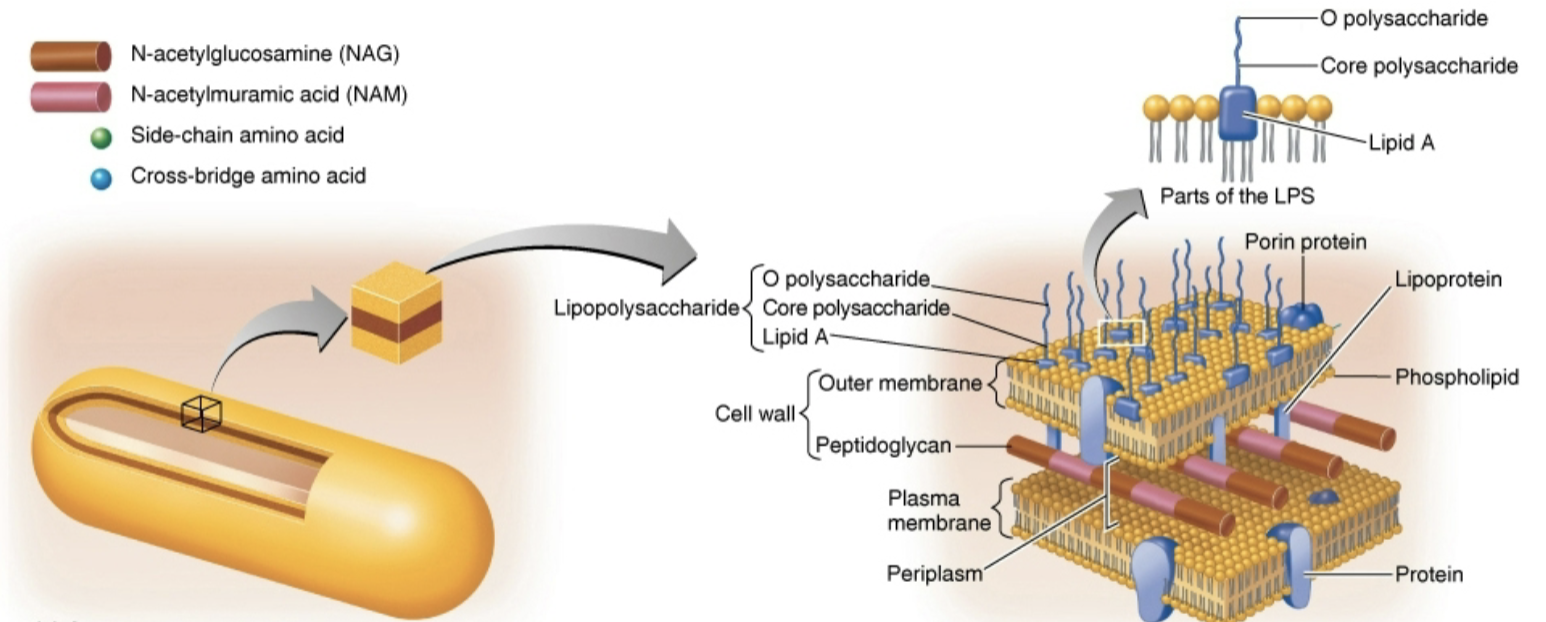
lipopolysaccharide (LPS)
large, complex molecule that contains lipids and carbohydrates and consists of three components: (1) lipid A, (2) a core polysaccharide, and (3) and O polysaccharide
lipid A
the lipid portion of the LPS and is embedded in the top layer of the outer membrane; is also an endotoxin
core polysaccharide
is attached to lipid A and contains unusual sugars; role is structural, as it provides stability
O polysaccharide
extends outward from the core polysaccharide and is composed of sugar molecules; functions as an antigen
porins
proteins that form channels through membranes; permits the passage of molecules
gram-postive cell wall characteristics
2 rings in basal body of flagella, produce exotoxins, high susceptibility to penicillin, & are disrupted by lysozymes
gram-negative cell wall characteristics
4 rings in basal body of flagella, produce endotoxins and exotoxins, low susceptibility to penicillin, & have an outer membrane
atypical cell wall examples
acid-fast cell walls, mycoplasmas, archaea
acid-fast cell walls
like gram-postitive cell walls, have waxy lipid (mycolic acid) bound to pepitdoglycan; found in Mycobacterium & Norcardia; can be stained with carbolfuchsin
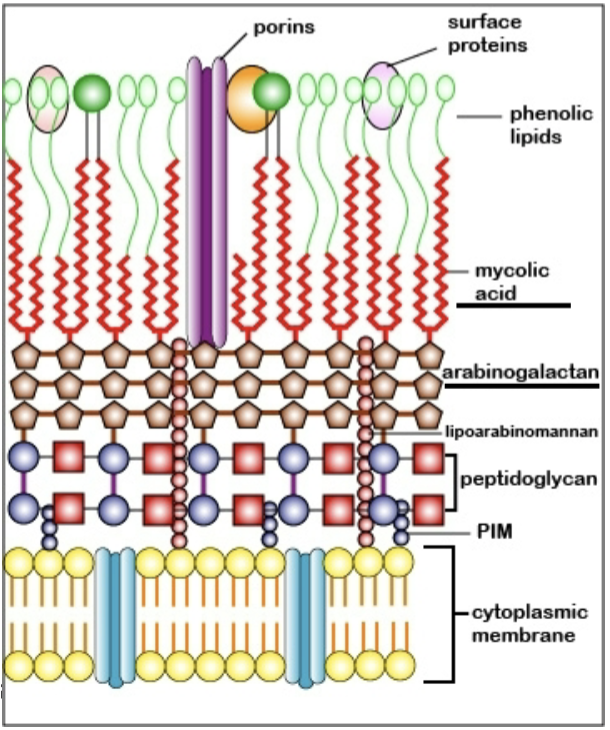
mycoplasma
bacteria with no cell wall; sterols in plasma membrane

archaea
lack cell walls or have walls of pseudomurein (lack NAM and D-amino acids)
damage to the cell wall can be caused by
lysozymes or certain antibiotics (like penicillin)
lysozyme
hydrolyzes bonds in pepitidoglycan in gram-positive bacteria, leading to cell lysis
penicillin
an antibiotic that inhibits peptide bridges in peptidoglycan
protoplast
a wall-less gram-positive cell
spheroplast
a well-less gram-negative cell
protoplasts and spheroplasts
are susceptible to osmotic lysis
L forms
are wall-less cells that swell into irregular shapes
glycocalyx
the general term used for substances that surround cells, it is a viscous (sticky), gelatinous polymer that is external to the cell wall and composed of polysaccharide, polypeptide, or both; many prokaryotes secrete this on their surface
types of glycocalyx
capsule & slime layer
capsule
neatly organized and firmly attached to the cell wall
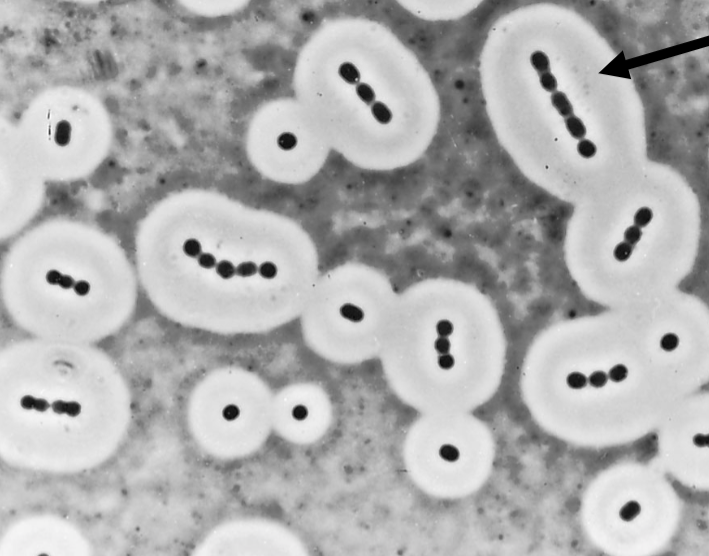
slime layer
unorganized and loosely attached to the cell wall
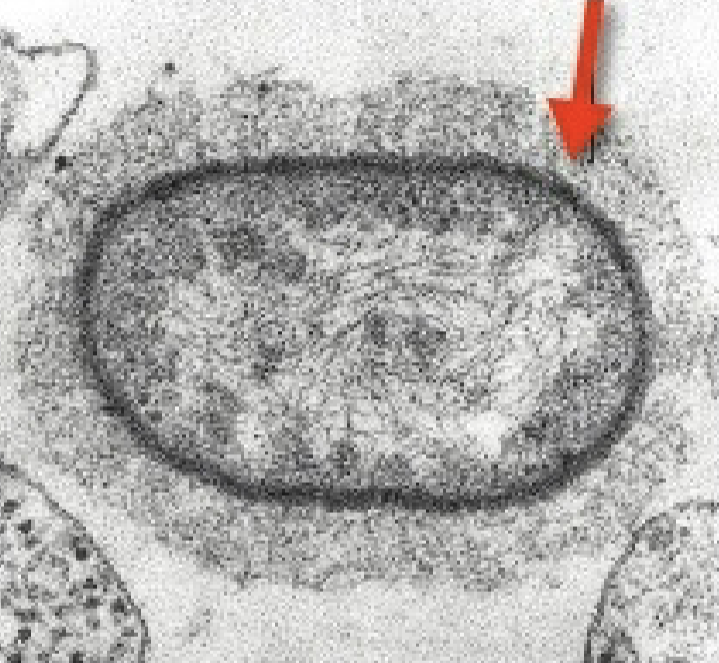
capsules prevent
phagocytosis or facilitate adherence
extracellular polymeric substance (EPS)
a glycocalyx that helps cells in a biofilm attach to their target environment and to each other
flagella
filamentous appendages external of the cell, propel bacteria, & made of protein flagellin
3 parts of flagella
filament, hook, basal body
filament
long, outermost region of flagella
hook
attaches to the filament
basal body
consists of rod and pairs of rings; anchors flagellum to the cell wall and membrane
arrangements of bacterial flagella
peritrichous or polar (includes monotrichous, lophotrichous, & amphitrichous)
peritrichous
distributed over the entire cell
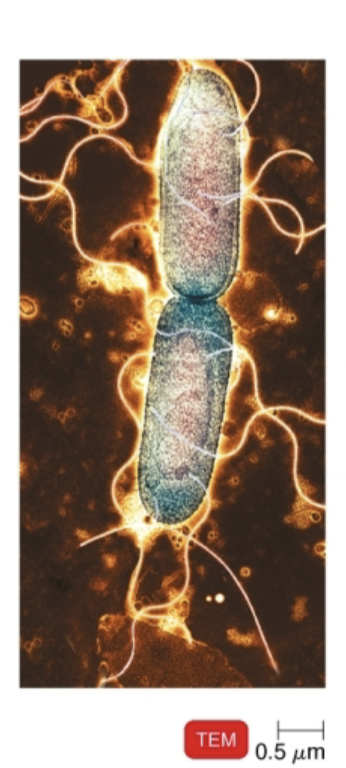
monotrichous & polar
a single flagellum at one pole

lophotrichous & polar
a tuft of flagella coming from one pole; multiple flagella arising from the same point in the cell
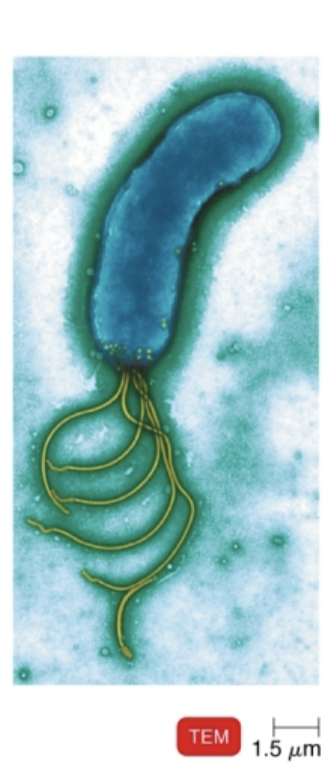
amphitrichous & polar
flagella at both poles of the cell
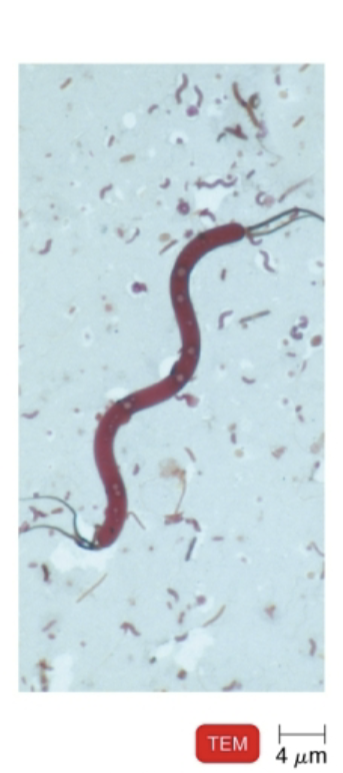
flagella allows bacteria
to move toward or away from stimuli (taxis); examples include chemotaxis, phototaxis
flagella rotations
they “run” counterclockwise or “tumble” clockwise
flagella proteins
are H antigens and distinguish among serovars (e.g., Escherichia coli O157:H7)
motility
the ability to move
fimbriae
hairlike appendages that allow for attachment to surfaces
pili
involved in motility (gliding & twitching)
conjugation pili
involved in DNA transfer from one cell to another
axial filaments or endoflagella
found in spirochetes, anchored at one end of a cell where the rotation causes the cell to move like a corkscrew
cytplasm
the substance inside the plasma membrane; 80% water plus proteins, carbohydrates, lipids, & ions; contains cytoskeleton
the nucleoid
region in a prokaryotic cell that contains genetic information
bacterial chromosome
circular thread of DNA that contains the cell’s genetic information
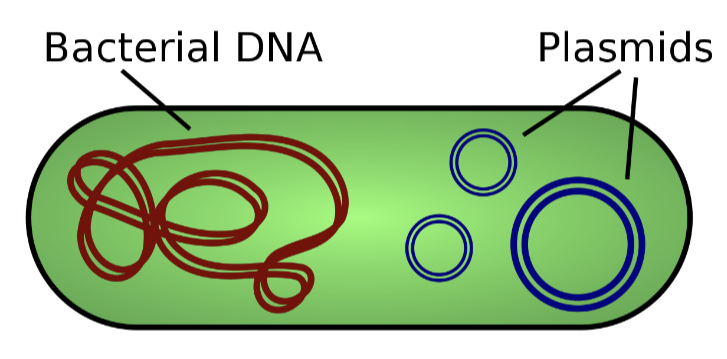
plasmids
extrachromosomal genetic elements carry non-crucial genes (e.g., antibiotic resistance, production of toxins)
ribosomes
sites of protein synthesis; made of protein and ribosomal RNA
70S (prokaryotic) ribosomal unit consists of
50S & 30S subunits
80S (eukaryotic) ribosomal unit consists of
60S & 40S subunits
average length of bacterial cells
1-10 μm
average size of eukaryotes
10-100 μm